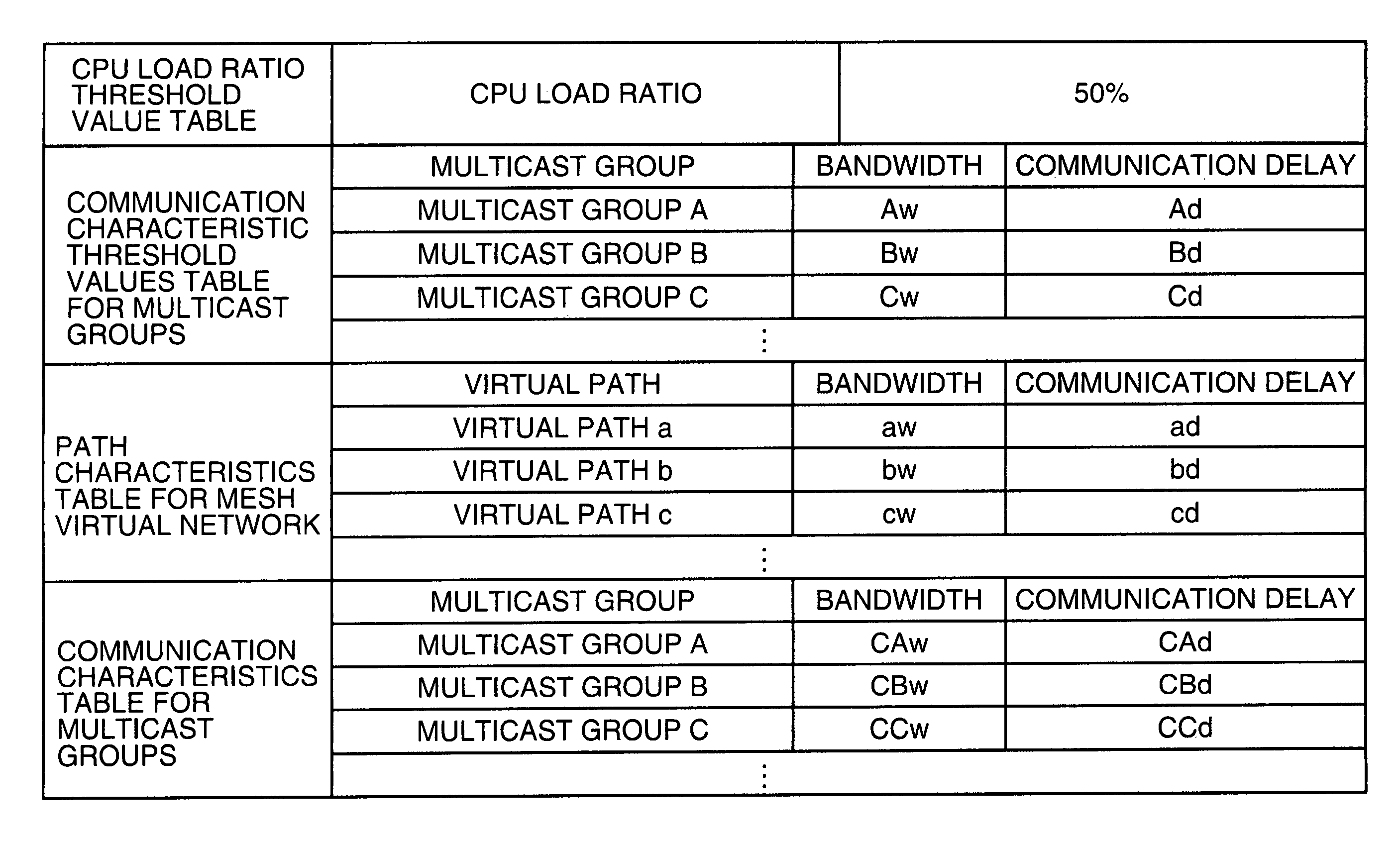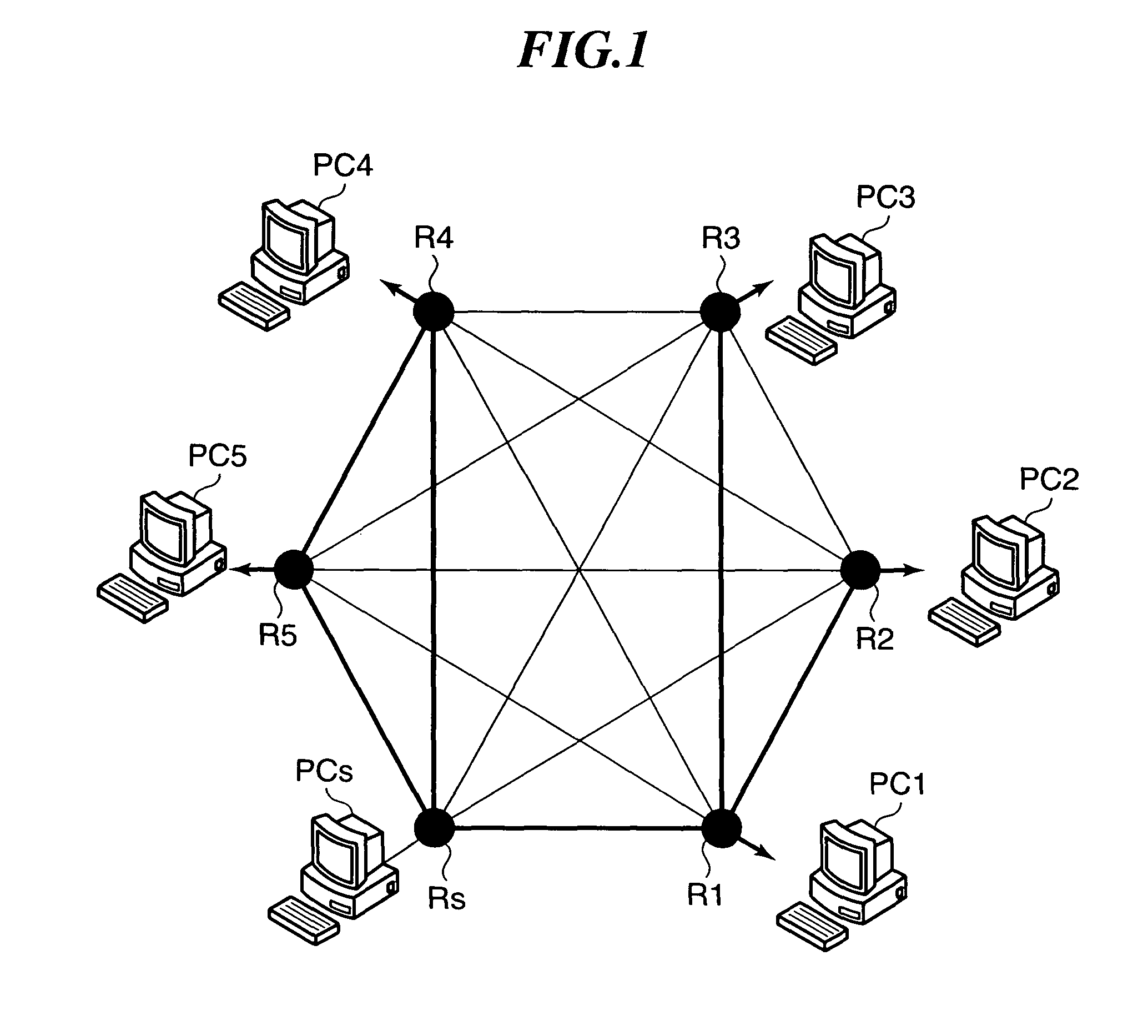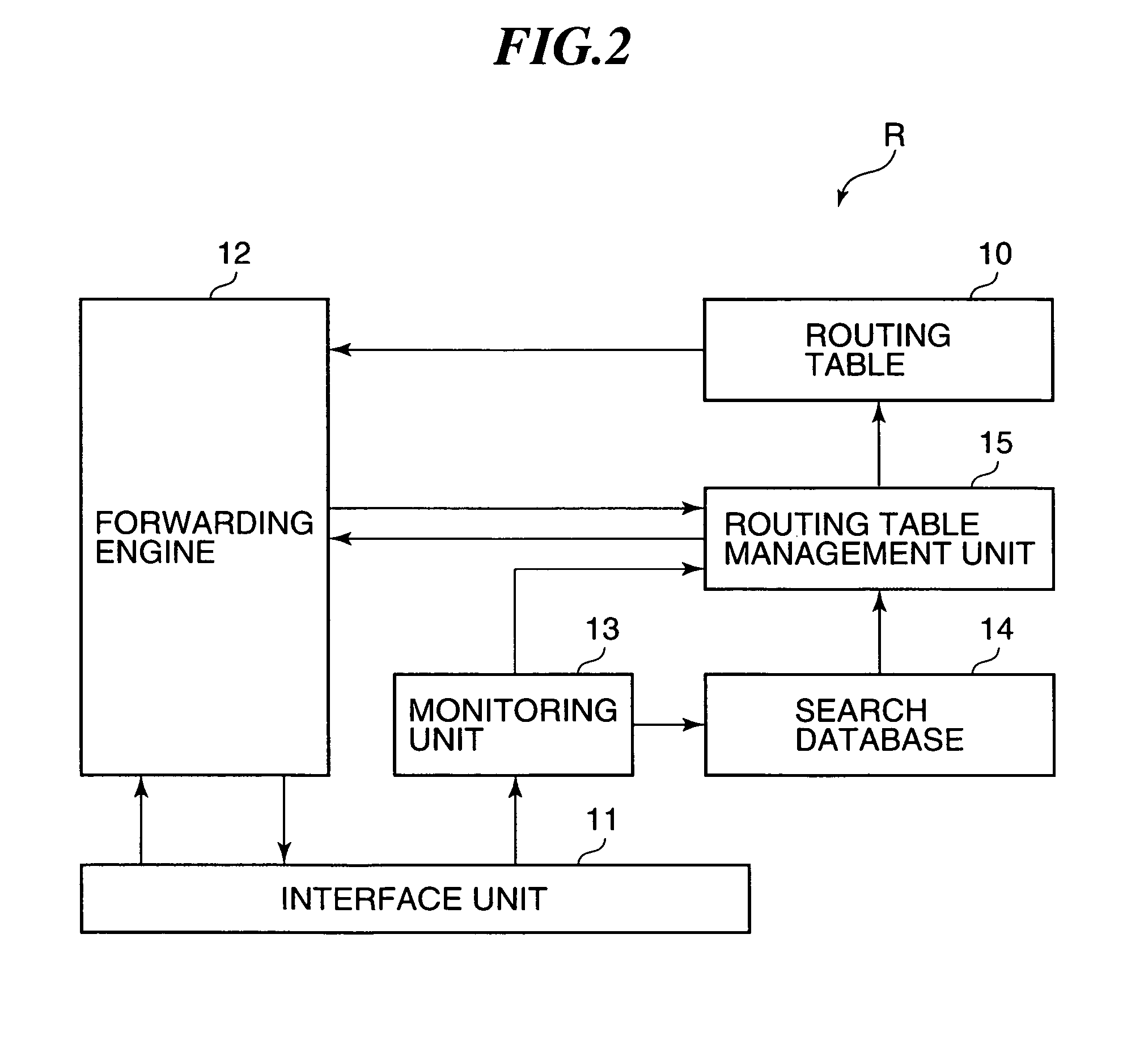Multicast distribution system and method for distributing data on a mesh virtual network
a technology of multicast distribution and data, applied in data switching networks, instruments, wireless communication, etc., can solve the problem of large load applied to the distribution source router, and achieve the effect of ensuring the scalability of multicast distribution and reducing bandwidth load
- Summary
- Abstract
- Description
- Claims
- Application Information
AI Technical Summary
Benefits of technology
Problems solved by technology
Method used
Image
Examples
Embodiment Construction
[0031]FIG. 1 illustrates multicast distribution performed between a plurality of routers connected to a mesh virtual network. As shown in FIG. 1, routers R (Rs and R1 to R5) are connected to the mesh virtual network and connected to respective ones of communication devices PC (PCs and PC1 to PC5) each implemented by e.g., a personal computer or a cell phone. In the illustrated example, the router Rs is a distribution source router that performs multicast distribution to the other routers. Specifically, the router Rs receives a multicast packet from an application for multicast distribution running on the communication device PCs, and performs multicast distribution to distribution destination routers related to the application, e.g., the routers R1 to R5. To this end, the distribution source router Rs creates, on the mesh virtual network, a multicast network that constitutes a multicast packet communication path from the router Rs to the distribution destination routers, and creates...
PUM
 Login to View More
Login to View More Abstract
Description
Claims
Application Information
 Login to View More
Login to View More - R&D
- Intellectual Property
- Life Sciences
- Materials
- Tech Scout
- Unparalleled Data Quality
- Higher Quality Content
- 60% Fewer Hallucinations
Browse by: Latest US Patents, China's latest patents, Technical Efficacy Thesaurus, Application Domain, Technology Topic, Popular Technical Reports.
© 2025 PatSnap. All rights reserved.Legal|Privacy policy|Modern Slavery Act Transparency Statement|Sitemap|About US| Contact US: help@patsnap.com



